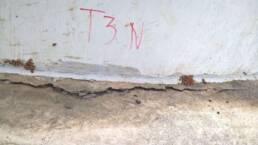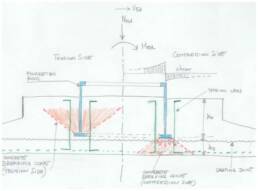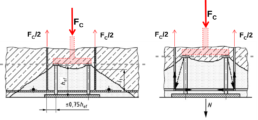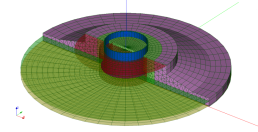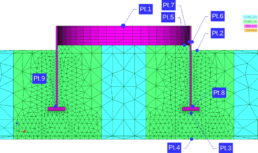The problem
A damage at the interface between the foundation ring and the concrete of the pedestal have been detected after few month of operation. Following measurements revealed relative movements between the steel ring and the concrete to be slightly above the allowable value.
As a countermeasure a detailed re-analysis of the foundation was carried out using a detailed numerical model.
Preliminary analyses
It’s always a good practice to start the a Root Cause Analysis with “simple” hand calculations, approaching the problem in a simple and effective way.
An analysis of the foundation geometry showed how the foundation ring bottom flange was relatively closer to the foundation base, leaving less space for the concrete breaking cone to develop in the compression side of the bending moment. The ability of vertical reinforcement typically used to resist the vertical compression force under the bottom flange was therefore further investigated.
Suspects were concentrated at the interface between the bottom flange of the embedded ring and the concrete. Before starting any numerical simulation hands calculations were performed in order to predict the actual capacity at the interface. In doing hand calculations reference to well known literature and standards is always made.
Numerical analyses
A numerical model was built to analyze the detail of the interface between the foundation ring bottom flange and the concrete. The model contains three principal meshes:
- The concrete mass
- The reinforcement
- The foundation ring
Interaction between the foundation ring and the concrete body was included in the analysis, together with frictional effects over the surfaces. Some control points were selected to compare the relative displacement from the numerical model to the ones from the measurements on site.
Results
Several numerical analyses were performed by investigating the influence of a few parameters of the model. The area of the foundation under the ring bottom flange was suffering under medium and high wind loads as the vertical reinforcement legs are not sufficiently anchored in the concrete below.
Stiffness degradation curves were also derived in order to understand the potential impact on the structural frequencies. The overall analyses helped to establish a more frequent control of the foundation interface during the service period.
